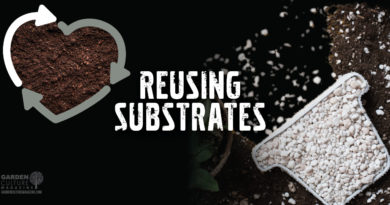What to Do at the End of the Summer Gardening Season
The end of the season is here and your harvests are starting to slow down. What next? Preparing for your next crop, of course.
Cleaning immediately, rather than waiting for spring, will leave you with a fresh space to get things accomplished next year.
It could also help you plan out what is needed for next season and gives you plenty of time to get your budget ready.
Email Newsletter
Join thousands of other growers who are already receiving our monthly newsletter.
Finally, organizing your garden space immediately after the end of a growing season can make you feel more excited about getting the next cycle going.
Here are some small suggestions to get you started:
Dust off all surfaces. Start dusting, and don’t forget your light bulbs, lamps and shelving in this process. This will help reduce the amount of dust you have to deal with when spring comes around again, especially if you only use this workspace during the outdoor growing season.
Wash windows. One of the most important ways to end your season is to wash the windows in your workspace to allow the winter light to come in if you’re planning on continuing to grow indoors.
Tidy up the floor. Pay attention to the floor and to tidy up any spaces where you may have spilled seeds or dirt so you are not attracting pests. This will also help prevent tripping hazards.
Store harvests. Make sure harvests are stored properly to keep them for as long as possible, such as potatoes, spaghetti squash and others that have a decent shelf life once harvested. This also goes for any canning completed over the summer.
Keep things organized. Clean up and organize any pots, tools and growing materials you used during the season. This can be a great time to sterilize your equipment for next year. Putting tools and equipment in their proper places will ensure you are not searching for them come spring.
Read also: Two Methods to a Great Clean: Sanitizing and Sterilizing
Maintain equipment. Be sure to do any necessary maintenance on your tools, such as sanding them, sharpening any dulled edges and rubbing them with oil to protect them over the winter months. Special oil is not necessary—many home gardeners find that vegetable oil is effective.
Create an inventory. After organizing, an inventory can be used to help determine what equipment and tools may need replacing over the winter months, when these items can sometimes be found on clearance racks. You might be surprised at how much equipment and planters you actually have once you have created your inventory.
Make a plan. Create a planting chart for your next potential gardening project. This can also be a good time to organize any seeds you have dried from your previous harvest.
Don’t save your gardening clean-up work for spring! Instead, get your space ready for the next growing season right after you finish up your current one. This will make starting your spring garden that much easier because you will not have to deal with a big mess.
Think of how nice it will be to start the new season off fresh and being able to get right to the good stuff—everything you love about gardening—by taking care of pesky chores immediately.




